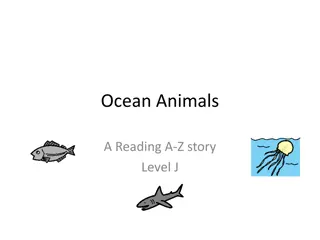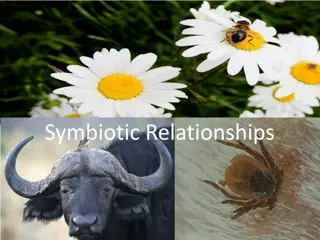Fascinating Facts About Iguanas: From Skills to Survival
Iguanas, part of the Iguanidae family, are unique reptiles with special skills like tree climbing and predator evasion. They face threats due to human consumption and environmental hazards, such as oil spills for marine iguanas. Their sensory organ, Jacobson's organ, helps them navigate their surroundings. Learn about their distinct body parts like scales, spines, fatty deposits, and more. Explore the intriguing world of these cold-blooded creatures.
Download Presentation

Please find below an Image/Link to download the presentation.
The content on the website is provided AS IS for your information and personal use only. It may not be sold, licensed, or shared on other websites without obtaining consent from the author. Download presentation by click this link. If you encounter any issues during the download, it is possible that the publisher has removed the file from their server.
E N D
Presentation Transcript
Iguanas By Jonathan k.
What are Iguanas? Iguanas belong to a family of lizards called Iguanidee. Also iguanas are Omnivores unlike other lizards, most lizards do not have a special bacteria that digests plants. Another thing about iguanas is that they are cold blooded. They need to lie in the sun to keep warm if they get to hot they will lie in shady areas
Skills of a iguana Iguanas use different skills for many reasons, from fighting predators to tree climbing. To start with, iguanas use their sharp claws to climb trees and for desert iguana, prying open cactus. Another skill is that they use there tails to drive of predators. Also another skill is that also when frightened in a tree, they will jump off the tree. They can jump off of a total height of 40 feet. Also into water they will jump into.
The NOT so common iguanas and why they are in danger The green iguana-Also known as the common iguana but it s not common because people in the American tropics like to eat there eggs and the the iguanas The marine iguana-These water iguanas are in danger because of the oil spills
Sensing their surroundings Iguanas have a special organ that helps them learn about there environment. This special organ is known as the Jacobson s organ. Surprisingly this organ is two tiny holes at the top of their mouth. This organ works when the iguana sticks out its tongue and the tongue picks up ground and air particles and puts it in the organ. The organ has sensitive nerves that aid the smell and feeling of the particles. Then the nerves send information to the brain about the particles.
Parts of the iguana and what they are Scales-these are made of hard keratin that for iguanas it act as a water proof scales and these scales are made of the same materials as your finger nail Spines-This part is broken into 3 parts the nuchal spines, the neck s spines, the dorsal spines, the spine on the back, and the caudal spines, these are the spines on the back **** spines are the spikes on a iguanas back Fatty deposits-This makes the male look larger than the female
Parts of the iguana and what they are continued .. Dewlap-the flappy piece of skin that is under the chin that makes the iguana look clumsy Jowls-This part feels like a pillow and makes the iguana look larger Parietal-Another word for the iguanas third eye this eye senses light and dark and tells the iguana weather to move into shade or stay in the sun Ears-Iguanas ears can hear things from great distances Neck-Combines the head to the body
Iguana Credits Resource 1 the data base www.Reptiles- parrots.com Resource 2 From Mrs. Wolski, two books called Iguana
Ask the fortune Iguana How many species of iguanas are there? What is the name of the special organ that has 2 tiny holes? Name both types of the iguanas that are uncommon.

















































